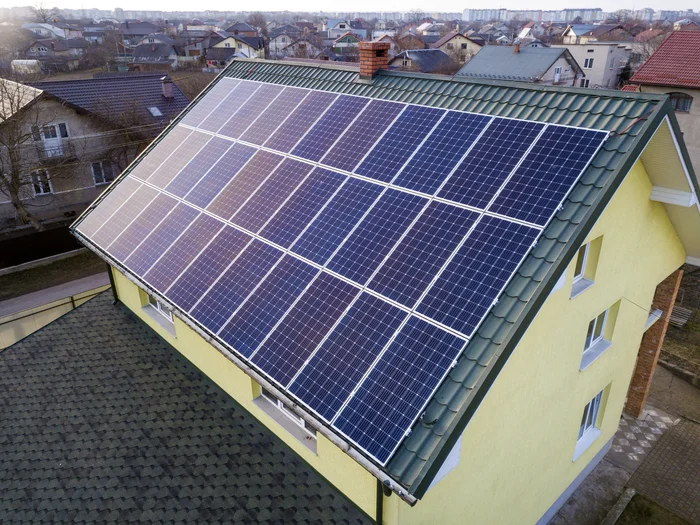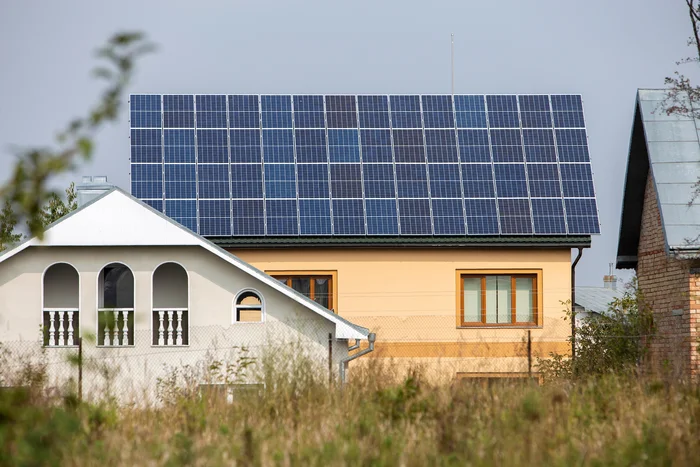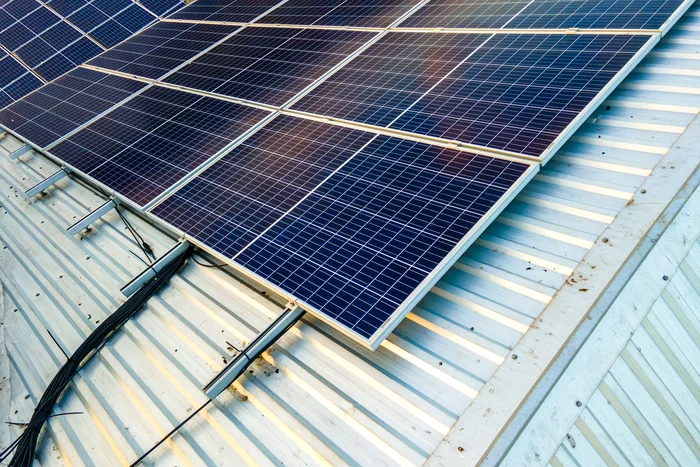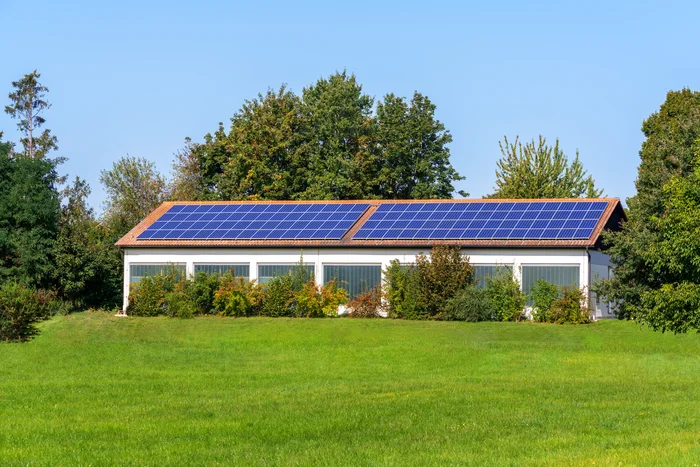How does solar work? Is solar safe?
Solar energy in a solar system works by converting sunlight into electricity using photovoltaic (PV) panels. These panels contain cells made of semiconductor materials, like silicon, which generate an electric current when exposed to sunlight. This current is then converted from direct current (DC) to alternating current (AC) by an inverter, making it usable for your home’s appliances.
As for safety, solar panels are generally very safe. They don’t have any moving parts, meaning there’s little risk of mechanical failure or accidents. Additionally, most modern panels are designed to withstand harsh weather conditions like hail, snow, and high winds. The most significant safety concern is electrical, but as long as your system is installed by a certified professional and maintained properly, the risks are minimal. In fact, solar systems are often safer than traditional electricity sources because they don’t involve flammable fuels or combustion.

Planning a Home Solar Electric System
Before diving into solar, you’ll need to plan carefully. Start by evaluating your home’s energy needs. Look at your electricity bills over the past year to understand your average consumption in kilowatt-hours (kWh). This will help you determine how many panels you need to meet your energy needs fully or partially.
Next, consider your roof’s condition and orientation. A roof that faces south or west is ideal for solar panels in the Northern Hemisphere because it receives the most sunlight throughout the day. Also, make sure your roof is in good shape since installing solar on a roof needing repairs can be costly and inefficient.
Finally, research local regulations and incentives. Some states offer rebates or tax credits for solar installations that can significantly reduce the upfront cost. For example, in the U.S., the federal government offers a 30% tax credit for residential solar installations through 2032 under the Inflation Reduction Act. Local utility companies may also offer net metering programs that allow you to sell excess energy back to the grid.
Solar Panel Size
The size of your solar panel system depends on several factors: how much electricity you use, how much sunlight your home receives, and how much space you have available for installation. On average, a typical residential solar panel is about 65 inches by 39 inches and produces around 300-400 watts of power.
If your home uses 10,000 kWh annually and you live in an area with plenty of sunshine (like Southern California), you might need around 25-30 panels to cover your energy needs. However, if space is limited or your energy consumption is lower, you may opt for fewer panels or higher-efficiency models that generate more power per square foot.

Solar Panel Types
There are three main types of solar panels: monocrystalline, polycrystalline, and thin-film.
- Monocrystalline panels are the most efficient and expensive option. They’re made from a single crystal structure and perform well even in low-light conditions.
- Polycrystalline panels are slightly less efficient but more affordable. They’re made from multiple crystal fragments melted together.
- Thin-film panels are the least efficient but are lightweight and flexible, making them ideal for unconventional spaces or portable applications.
Choosing the right type depends on your budget, space constraints, and energy goals. For example, if aesthetics matter to you (perhaps you’re concerned about curb appeal), monocrystalline panels might be worth the extra investment because they tend to have a sleeker look compared to polycrystalline ones.
Is my home suitable for solar panels?
Not every home is a perfect candidate for solar panels. Here are some things to consider:
- Roof orientation and angle: South-facing roofs receive the most sunlight in the Northern Hemisphere.
- Shading: Trees or nearby buildings that cast shadows on your roof can reduce the efficiency of your system.
- Roof condition: If your roof needs repairs or replacement soon, it’s best to address that before installing solar.
- Local climate: While solar works in cloudy areas (yes—even Seattle!), homes in sunny regions will generate more power.
If these factors align well with your home’s setup, then solar could be a great fit! But don’t worry if conditions aren’t perfect—there are often workarounds like trimming trees or using micro-inverters to optimize output even with partial shading.
What Type of Solar System Do You Need?
There are different types of solar systems depending on how you want to use the energy:
- Grid-tied systems: These are connected to the utility grid and allow you to draw power from it when needed (like at night) while feeding excess power back into the grid during sunny days.
- Off-grid systems: These systems store excess energy in batteries so you can use it when the sun isn’t shining. They’re ideal if you live in a remote area without access to a utility grid.
- Hybrid systems: These combine both grid-tied and off-grid features by using batteries while still being connected to the grid as a backup.
Each type has its pros and cons depending on where you live and how independent from the grid you want to be. For instance, off-grid systems provide complete independence but require more upfront investment due to battery costs.

What to Consider When Buying Solar Panels for Your Home
When shopping for solar panels, there are several key factors to keep in mind:
- Efficiency: Higher efficiency means more electricity generation per square foot.
- Durability: Look for warranties that cover at least 25 years—this ensures long-term performance.
- Cost: While prices have dropped significantly over the years (by about 70% since 2010), higher-efficiency models tend to cost more upfront.
- Aesthetics: Some homeowners prefer sleek black monocrystalline panels over blue polycrystalline ones for aesthetic reasons.
By weighing these factors carefully, you’ll find a system that meets both your energy needs and personal preferences.
What else do you need besides solar panels?
Solar panels alone won’t power your home; you’ll also need:
- Inverters: Convert DC electricity from the panels into AC electricity for household use.
- Mounting hardware: Securely attach the panels to your roof or ground installation.
- Batteries (optional): Store excess energy for later use if you’re going off-grid or want backup power during outages.
- Monitoring systems: Track how much energy your system generates and uses over time through apps or online dashboards.
These components work together like parts of an orchestra—each playing its role in ensuring smooth operation of your solar system.

How much power can I generate with solar?
The amount of power you can generate depends on several factors:
- Location: Homes in sunnier areas will naturally produce more electricity.
- Panel efficiency: Higher-efficiency panels generate more power per square foot.
- System size: Larger systems with more panels produce more electricity.
On average, a 5-kilowatt (kW) system can produce around 20 kWh per day under optimal conditions—enough to cover most households’ daily energy needs. However, actual production varies based on local weather patterns and shading conditions. For example, homes in Arizona might produce significantly more than those in New York due to differences in sunlight exposure.
What are the environmental benefits of solar?
Solar energy offers numerous environmental benefits:
- Reduces carbon footprint: Solar power generates clean electricity without emitting greenhouse gases like carbon dioxide (CO2).
- Decreases reliance on fossil fuels: By switching to renewable energy sources like solar, we reduce our dependence on coal, oil, and natural gas.
- Conserves water resources: Unlike traditional power plants that consume large amounts of water for cooling purposes, solar requires little to no water during operation.
- Promotes sustainability: As a renewable resource, sunlight is abundant and inexhaustible—making it a sustainable choice for long-term energy production.
By choosing solar power for your home, you’re not only saving money but also contributing positively to the environment!
